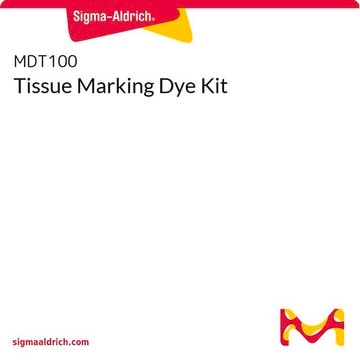442658-U
Methylene di-p-phenyl diisocyante
analytical standard
Sign Into View Organizational & Contract Pricing
All Photos(1)
About This Item
Recommended Products
grade
analytical standard
packaging
ampule of 1000 mg
technique(s)
HPLC: suitable
gas chromatography (GC): suitable
application(s)
environmental
format
neat
storage temp.
2-8°C
InChI
1S/C15H10N2O2/c18-10-16-14-5-1-12(2-6-14)9-13-3-7-15(8-4-13)17-11-19/h1-8H,9H2
InChI key
UPMLOUAZCHDJJD-UHFFFAOYSA-N
Application
Refer to the product′s Certificate of Analysis for more information on a suitable instrument technique. Contact Technical Service for further support.
Signal Word
Danger
Hazard Statements
Precautionary Statements
Hazard Classifications
Acute Tox. 4 Inhalation - Carc. 2 - Eye Irrit. 2 - Resp. Sens. 1 - Skin Irrit. 2 - Skin Sens. 1 - STOT RE 2 Inhalation - STOT SE 3
Target Organs
Respiratory system
Storage Class Code
11 - Combustible Solids
WGK
WGK 1
Flash Point(F)
411.8 °F - closed cup
Flash Point(C)
211 °C - closed cup
Personal Protective Equipment
dust mask type N95 (US), Eyeshields, Gloves
Choose from one of the most recent versions:
Already Own This Product?
Find documentation for the products that you have recently purchased in the Document Library.
Taeyi Choi et al.
Journal of biomaterials science. Polymer edition, 22(7), 973-980 (2010-12-15)
Novel hard-block-only polyurethanes are prepared from 1,4-butanediol (BDO) and a pre-polymer synthesized separately from 1,3-bis (4-hydroxybutyl) tetramethyl disiloxane (BHTD) and 4,4'-diphenylmethane diisocyanate (MDI). Three (co)polymers using different proportions of these chain extenders were synthesized using reaction injection moulding, and their
Anoop Kumar et al.
Chemical research in toxicology, 22(12), 1975-1983 (2009-11-26)
4,4'-Methylenediphenyl diisocyanate (MDI) is the most important of the isocyanates used as intermediates in the chemical industry. Among the main types of damage after exposure to low levels of MDI are lung sensitization and asthma. Albumin adducts of MDI might
Hille Suojalehto et al.
American journal of industrial medicine, 54(12), 906-910 (2011-10-12)
Orthopedic plaster casts contain methylene diphenyl diisocyanate (MDI). A few case reports have suggested occupational asthma to MDI in casting work. However, the knowledge of the exposure levels related to the occupational asthma cases is lacking. We report on two
Jürgen Pauluhn
Regulatory toxicology and pharmacology : RTP, 61(3), 351-364 (2011-10-22)
Polymeric methylenediphenyl diisocyanate (MDI) is a high production volume chemical intermediate consisting of monomeric 4,4'-MDI, its 2,2'- and 2,4'-isomers, and higher oligomeric homologues. The toxicity of pMDI has systematically been investigated in previous regulatory and mechanistic studies. One cornerstone of
E Vangronsveld et al.
International journal of hygiene and environmental health, 213(6), 475-488 (2010-09-21)
It is well known that the use of MDI (methylene diphenyldiisocyanate) as an alternative for formaldehyde-based resins is seen as a responsible option to reduce formaldehyde emissions for CWP (Composite Wood Products) in buildings. However, there are concerns raised regarding
Our team of scientists has experience in all areas of research including Life Science, Material Science, Chemical Synthesis, Chromatography, Analytical and many others.
Contact Technical Service








